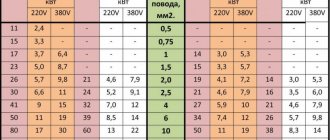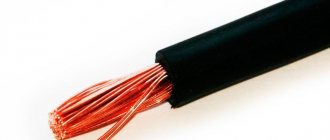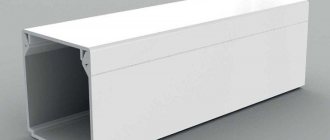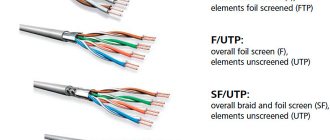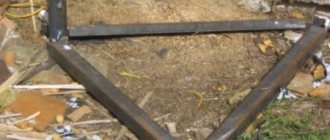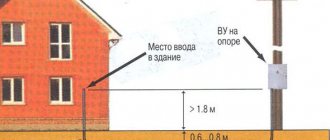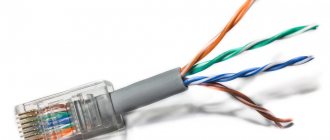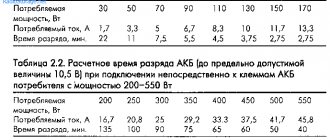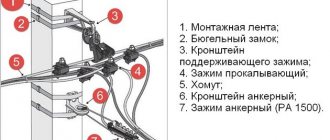Estimated reading time: 12 minute(s)
The rating of the article is not difficult for you, but it’s interesting for me. Please vote at the end of the article!
Do you like to enjoy high-quality sound? You have good speakers (maybe not even cheap ones), an excellent powerful amplifier. But the sound is somehow “not very good”, “something is wrong.” Are the wires that connect the speakers good? Thin, thick? What is the cross section of these wires? Do not know? Let's clarify a little - why is this necessary, why such questions. We will also give an example of how to calculate the cross-section of an acoustic cable for your acoustics.
Whether you listen to music at home through your good amplifier and speakers, or you have speaker systems of different power installed (such as “home theater”), or in general, you use professional systems, then in any case, it is important to use high-quality speaker cables. Yes, about them again! And also, it is necessary to create conditions for reliable and high-quality connection.
Design
Any audio wire for a home stereo or professional equipment consists of a conductive core covered with insulation, in some cases shielded, and an additional layer of outer braiding. Low-quality products often cause signal distortion or reduced power, sound deformation and the presence of extraneous noise.
There are several types of speaker cables based on their structure:
- single-core;
- stranded (bundled, symmetrical and asymmetrical, concentric, parallel and rope);
- twisted pair (with different types of shielding or without shielding at all);
- coaxial (high resistance to external interference).
Combined
Combination cables combine different materials (both metallic and non-metallic). The most popular and in demand by consumers are cables that combine copper with carbon. It should be borne in mind that this option has excellent technical characteristics and properties.
Therefore, speaker cables differ mainly in the material of manufacture. When purchasing, you should take this important fact into account.
However, speaker cables can be classified not only by the material they are made of, but also by a number of other characteristics. So, audio cables can be divided into the following types:
- symmetrical (this option consists of 2 stranded cores with a special conductive screen - hence the name of the type);
- asymmetrical (this audio cable is used in different areas of life: in home and computer equipment, in musical equipment, etc.);
- parallel (the cable has 2 stranded cores, isolated from each other);
- The coaxial wire is equipped with a special protection system that helps protect the wires from any external interference.
In addition, experts identify a specific type of audio cable called twisted pair.
it is characterized by a large number of different options for weaving conductors (these conductors can be either monolithic or multi-wire). In addition, some custom twisted pair cable models are equipped with complex shielding. This feature significantly improves signal quality.
Resistance and cross section
The carrying capacity of the wire is also important, which is affected by its own length, resistance and cross-section. The insufficient cross-section of the speaker wires contributes to the dissipation of some of the power and the relatively quiet sound of low frequencies. Resistance is the property of a material to resist the movement of electrons. The documentation of the amplifier or speakers (information may be located on the back wall of the devices) contains the optimal resistance value, and in accordance with this, speaker cables for speakers are selected.
The cross-section is the cut area of the conductor core, the magnitude of which determines the strength of the current directed along the conductor core. The characteristics of the low-frequency path play an important role in determining the cross section. A win-win option is to buy a conductor with a larger cross-section than indicated in the passport for the speakers and amplifier, since the greater the thickness of the conductor, the better.
Material
As a rule, such products are made from high-quality copper of three categories:
- TPC – technically pure variety;
- OFC – oxygen-free copper (the most common option);
As you know, the lower the conductor resistance, the better the signal. Due to the low resistance of this metal, copper is an ideal material for creating the best speaker cables for speakers, music equipment, professional and car audio systems. However, there is no significant difference in sound when using oxygen-free or monocrystalline copper, since the characteristics of these conductors appear below the sensitivity zone of the human ear.
The conductive core can be doped with different compositions:
- silver, which adds emotionality and brightness to the sound;
- tin, which smooths out high frequencies.
The best brands
Due to the fact that today there are a large number of models of speaker cables (for example, AUX wires) produced by both foreign and Russian companies on the market, it is quite difficult for users to navigate the purchasing process in such a variety. We bring to your attention a rating of the best and most popular manufacturers.
Oyaide Tunami II SP-Y V2
The market value of this cable is about 45,000 rubles per 2 meters. Copper 102SSC 5.5 mm2 is used as a conductor. For insulation, materials such as polyolefin and polyolefin polymers are used. The connector coating consists of palladium and platinum. This cable provides high-quality Soundwall-type sound.
Lavardin Model CHR 317
This cable belongs to a higher price category, but is available to almost all buyers. It costs 60,000 rubles for 3 m. The Lavardin Model CHR 317 uses Low Memory Distortion technology. The positive characteristics of the cable include the ability to operate even with a low-frequency spectrum of sound waves.
HMS Elektronik Concertato WBT0610
The cable is made of copper and contains several Hf-Litz cores (2 x 3 x 2.85 mm2). The dielectric is made of Teflon, and the shell is made of polyurethane. The inductance level is 164 nH/m, and the capacitance level is 466 pF/m. The signal grows quite quickly - in just 11.5 μs. The country of origin of this cable is Germany, so you can count on the highest quality.
Kubala-Sosna Anticipation
This cable is manufactured in the United States of America. It provides high quality sound reproduction. In addition, the manufacturer can note macrodynamic contrasts. The Kubala-Sosna Anticipation model is perfect for playing rock music.
Tellurium Q Blue Diamond Speaker
The cost of the device is relatively high - for 2 meters of cable you will have to pay more than 78,000 rubles. The internal structure of the cable consists of a stranded conductor. This element, in turn, is made of oxygen-free copper. Section size – 2 x 2.5 mm2. The dielectric function is performed by Teflon with the addition of polymer resins. Phase distortion is zero.
Qed Supremus
This multi-core cable is created using silver-plated copper with a purity of 99.999%. The cross-sectional size is 10 AWG, 6.2 mm2, and the capacitance rating is 48 pF/m. The dielectric is ceramic; in the process of its manufacture, materials such as enamel with polyurethane foam were used.
Chord Company Epic Reference Speaker
This speaker cable model is one of the most expensive in our rating. The cost of 3 meters of wire is more than 95,000 rubles. In this case, the manufacturer used 4x12 AWG silver-plated copper as a conductor, and PTFE Teflon serves as a dielectric.
Thanks to the wide variety of manufacturers and models of audio cables, each person will be able to choose the option that will suit their individual needs.
How to calculate the cross-section of an acoustic cable
On the Internet you can find many opinions and disputes that the sound quality is affected by the material of the braiding and insulation, the twist pitch, the purity of the copper crystals, or even the number of strands in the wire. In fact, the quality of speaker wires depends on three factors:
- cross section;
- conductive core material;
- properties of the insulating coating.
Home acoustics are most often connected via a multi-core cable. To understand how to choose the cross-section of speaker cable for speakers, you will need to make some calculations. The first step is to determine the voltage in the circuit - multiply the peak power of the amplifier by the resistance, after which we take the square root of the resulting product. Next, you should determine the current by dividing the amplifier power by the voltage resistance. It is known that a wire with a cross-section of 1.5 square millimeters can withstand a current of up to 15 amperes.
It is much easier to calculate the cross section using the table below.
Prologue
This is not a statement, but reasoning and some experience in using wires of different sections.
Let's imagine we bought a new music center. It would seem that everything at the factory should be calculated and selected “as it should be.” But this often raises doubts as to whether the engineers calculated everything correctly. Is it correct that the acoustics at this center are connected with wires approximately 0.1-0.2 mm2 thick?
But with the music center option it’s easier, because it’s not designed for sounding a disco or even just for long-term operation at maximum volume. In addition, the included cable is no more than a meter long; it is not designed for someone to place the speakers in the corners of the room.
There will indeed be an opportunity to listen loudly, but it will not be sound, but simply cacophony! What it is? In short, it is a chaotic and meaningless jumble of sounds, which many perceive as music.
For the most part, this is the quality of the amplifier itself and the speaker systems themselves such that at a sufficient volume there may no longer be any sound, but what remains is a kind of “porridge” of sounds, cacophony.
But the wires that connect the speakers also contribute to this “mess”. Their quality, like wires in particular, often leaves much to be desired. Copper-clad aluminum wires are often found. They conduct voltage and current, but when we talk about high-quality sound, in this case it’s not about those wires.
Operating rules and selection tips
Many people don't know which speaker cable to choose. Here are some tips:
- you should choose products with special markings;
- It is important to determine the required length in advance, but it is best to buy copper wire with a reserve;
- pay attention to the type of connectors (connectors);
- products of famous brands are time-tested;
- the braid should not be sticky or sticky;
- for a home theater you will also need an optical cable;
- cheap goods do not guarantee high quality;
- The resistance of the speaker cable for speakers should not exceed 5% of the total value of the speaker.
Manufacturers suggest product users follow several simple operating rules. For example, to avoid a short circuit, polarity must be observed; it is prohibited to combine different wires, twist or bend them, or place the cable parallel to the network wiring.
It is also recommended to regularly clean the contacts and ensure that cables not in use are disconnected. Consistent connection of wires and equipment leads guarantees high-quality results. Special markings on speaker cables help you purchase the right products. For example, the positive wire has red insulation or is marked with a colored stripe, while the negative wire is usually painted black or not marked at all.
High-quality wires from reliable and world-famous manufacturers will help you enjoy beautiful and rich sound.
